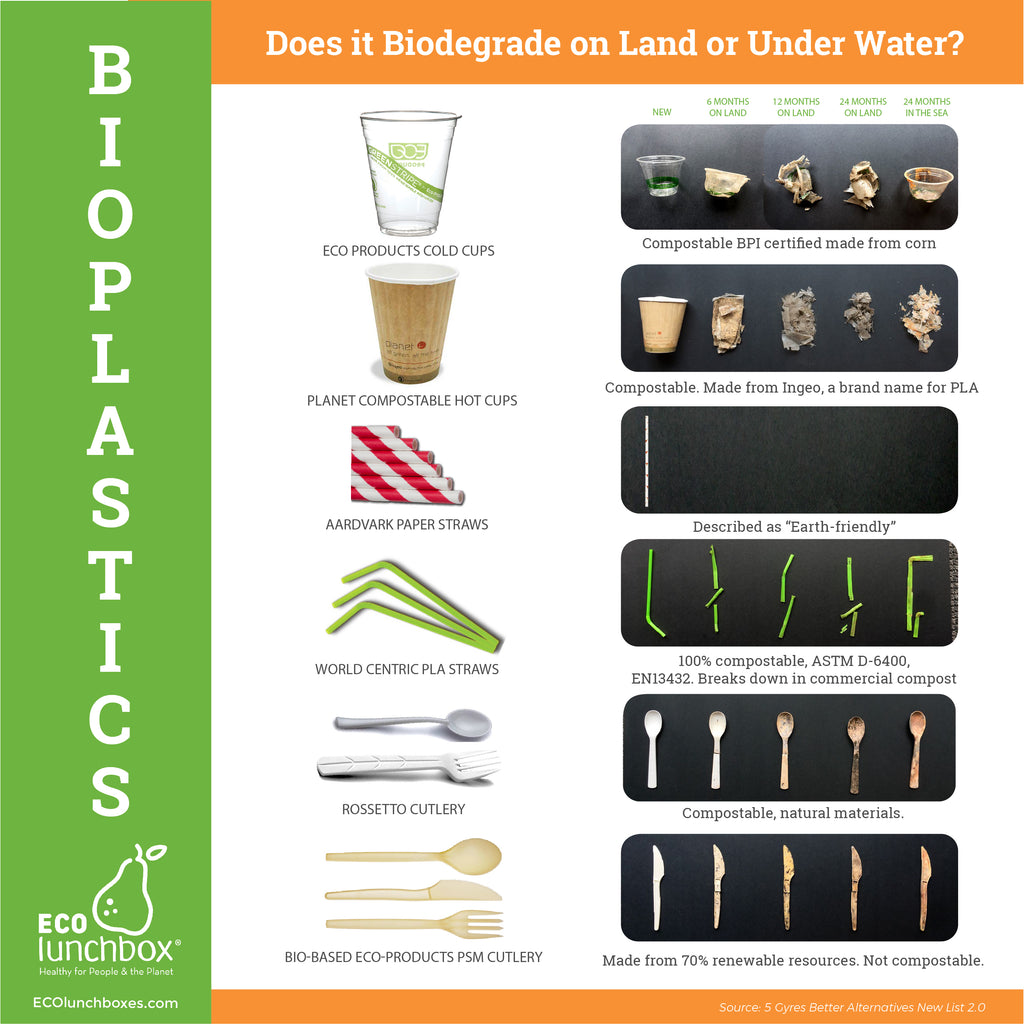The Truth & Consequences of Bioplastics

Bioplastics cannot save us. The best strategy for cleaning up our planet is saying goodbye to single-use plastic products!
Ready to have your eyes opened when it comes to bioplastic products? 5 Gyres tackles the promises of bioplastic technology in their annual report and comes to one startling conclusion: bioplastics simply aren’t what they’re cracked up to be.
What are bioplastics? They're billed as a biodegradable plastic substitute made from organic materials. This promising technology offers up a lot of catchy buzzwords like “eco-friendly” and “biodegradable,” but once they end up in that dark compost bin away from prying eyes, they aren’t breaking down as advertised.
What are bioplastics used for? They are used to manufacture all kinds of disposable food containers, cups, utensils, and other items meant to be thrown out after one use.
For their annual report, “Better Alternatives Now: B.A.N List 2.0,” 5 Gyres tested a variety of bioplastics in real life situations. This included suspending products in cages in ocean waters and burying them in the ground to best mimic the environments where they most often end up.

The labeling of these bioplastic products is often extremely vague. If companies are clearer in their testing standards, users would know where to toss items, whether it’s a compost bin or curbside recycling cart, 5 Gyres concluded. The non-profit organization researches plastic pollution in our oceans and advocates for environmental conservation.
Beyond Visual Recognition
To be considered biodegradable, commonly accepted standards require items to decompose beyond visual recognition. While many brands claim to do this, 5 Gyres found that most items when left in nature for extended periods of time merely fragmented, which means breaking apart into smaller pieces. This does not qualify as biodegradation.
How are bioplastics a better plastic alternative if the materials still end up polluting the world's oceans? They're not! The products tested by 5 Gyres generally only biodegrade in commercial composting environments with grinding and heating involved to aid the process. For bioplastics to truly be an environmental replacement to petroleum-based plastics, they'd need to be fully biodegradable in the natural environment whether it's land or ocean.
The solution is clear. Rather than using plastic alternatives, replace single-use plastic and bioplastic with reusable containers, utensils, cups, straws and other products as much as possible. Thanks to your lighter trash print, you’ll rest easy on trash day knowing you're doing your part to save the planet from plastic pollution.

“There Is No Away”
5 Gyres worked with 10 organizations to create their BAN list 2.0.
This included datasets from Heal the Bay and Clean Ocean Action, among others. This thorough report also identities plastic products, plastic alternatives, and packaging that are most littered and harmful to our environment.
The reports call for an end of all plastic and plastic alternative use, stating “Plastic--a material invented to last forever--can no longer be used to make products intended to be thrown away. There is no away.”





